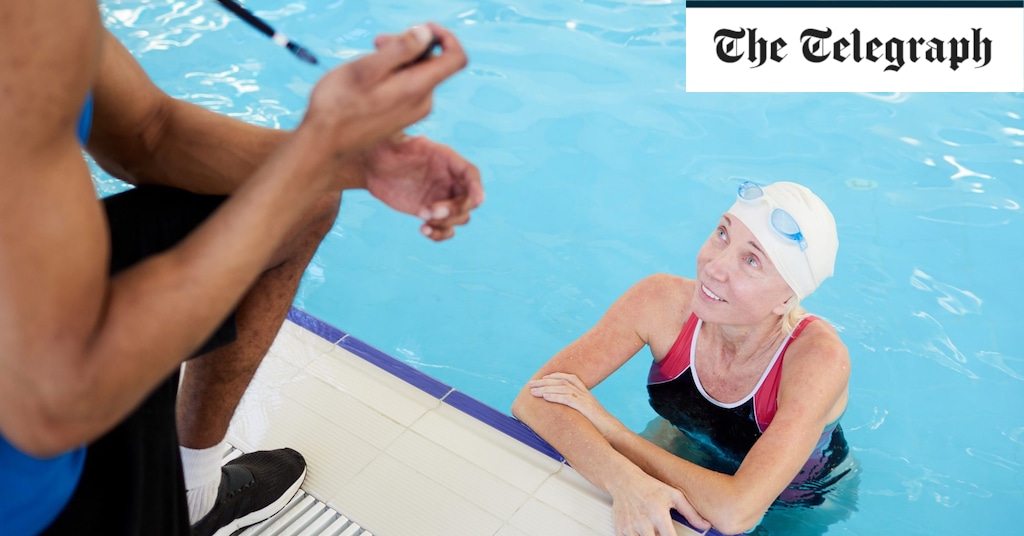So how do swimming lessons progress as we get older? Essentially, the core approach to learning to swim or the technique used does not change between adults and children. “It’s your motivation for learning and, crucially, the delivery that may differ to reflect adults’ unique needs,” says Brownlie.
“When it comes to technique, adults will typically learn what they need to whereas children will learn all aquatic skills on their journey – so this would be a distinction in how they are taught. It is also really important to know an adult’s ‘why’ for learning to swim, so teachers can adapt and tailor to their needs,” he adds.
After a break
“I didn’t really do swimming lessons as a child because I always had issues with my ears and wasn’t allowed in the water, but I first learned to swim around the age of 20,” Hayley Kellard, now 41, begins.
“If I go away for a week, by the end of the week I’ll have just started building up my confidence and be sort of swimming and then we go home.
“I haven’t been swimming for around five years now. I know I’ll have forgotten, because every time I go in a pool, I always have to learn again and can’t trust myself not to sink.”
In England, there has been a net loss of around 450 pools since 2010 according to Swim England, so even those who manage to swim on holiday find it hard to sustain regular swimming habits at home.
The increasingly elitist nature of swimming also seems to continually resurface. “In the last two years the cost of running swimming pools and the cost of going swimming has risen due to escalating energy prices and the cost of living crisis,” explains Euan Lowe, the chief executive of Scottish Swimming.
Swim England have called for a long-term plan from the Government to help deliver the network of sustainable pools we need for the future of all swimmers – whatever their age, ability or confidence level.
The benefits of diving in, whatever your ability
“There are a myriad of physical, mental, emotional and social health benefits of swimming,” Prof Whyte advises. “The support provided by water makes swimming an effective activity option irrespective of mobility and age.”
This ability to provide a whole-body workout that can help lower blood pressure and improve lung capacity, with water buoyancy reducing stress on weight-bearing joints, means it’s suitable for the elderly, those who are injured, or those living with a disability.
As for the mental health benefits, swimming regularly for 12 weeks was found to improve mood in those with dementia, as well as alleviating stress-induced depression and helping people with insomnia get some sleep.
“In addition, the social aspect of swimming and the wide variety of engaging activities results in greater motivation and enjoyment leading to more regular engagement with activity,” Whyte implores. In other words: you might fear judgement from the fastlane, but find your tribe down the shallow end.
Four steps to diving in
1. Build your water confidence
“You can do this by moving around in water that you can sit or stand in,” says Lowe. “Practise submerging your face in the water and blowing bubbles.”
2. Focus on your breathing
As you acclimatise to the sensations of being in and around the water, stay calm with deep breath. It will help further down the line when you develop your skills.
3. Identify practical obstacles
Before you launch into breaststroke, break down the arm movements and leg movements and practice in the shallow end or holding on to the side. Knowing the basics of water posture and orientation will help you create a solid foundation to build upon.
4. Skills training
“Important skills to master first are learning to float, standing up from a horizontal float,” Lowe adds. “Then you can start swimming small distances towards the wall using floatation aids, and swimming small distances away from the wall before standing in the pool.”
